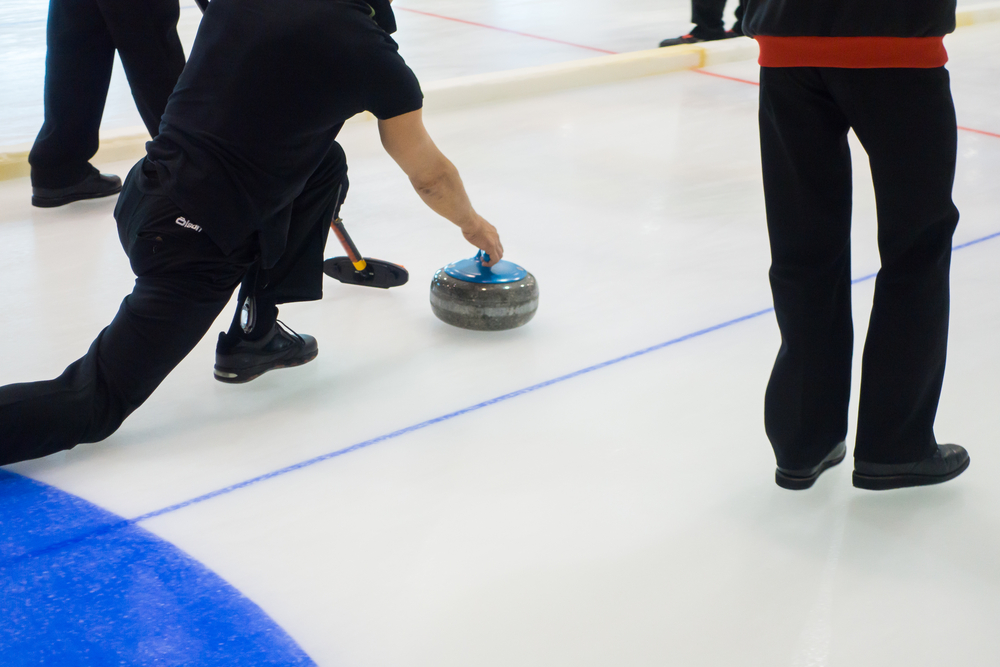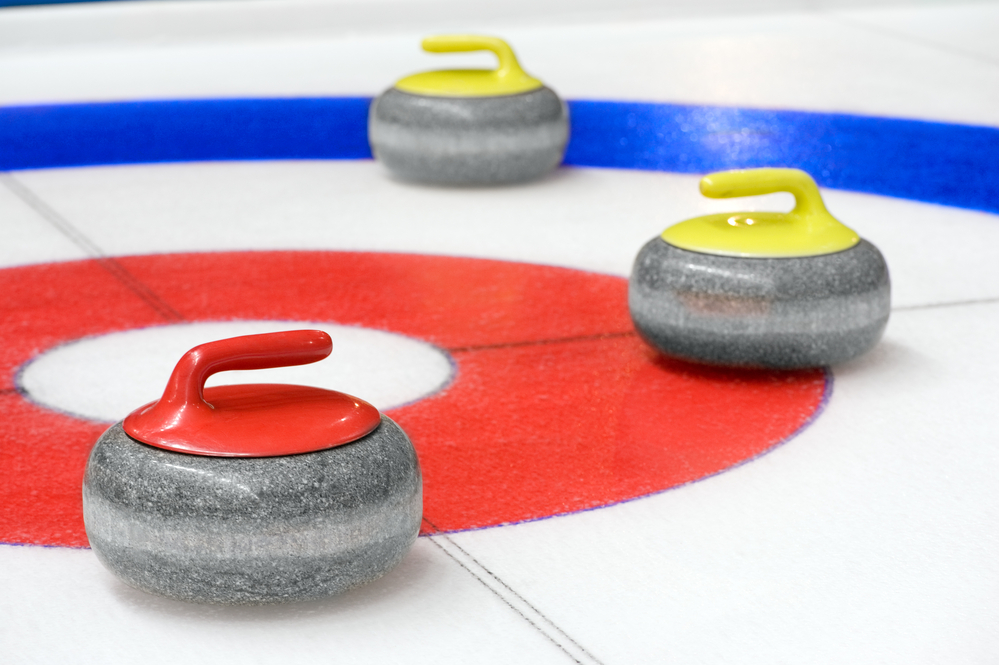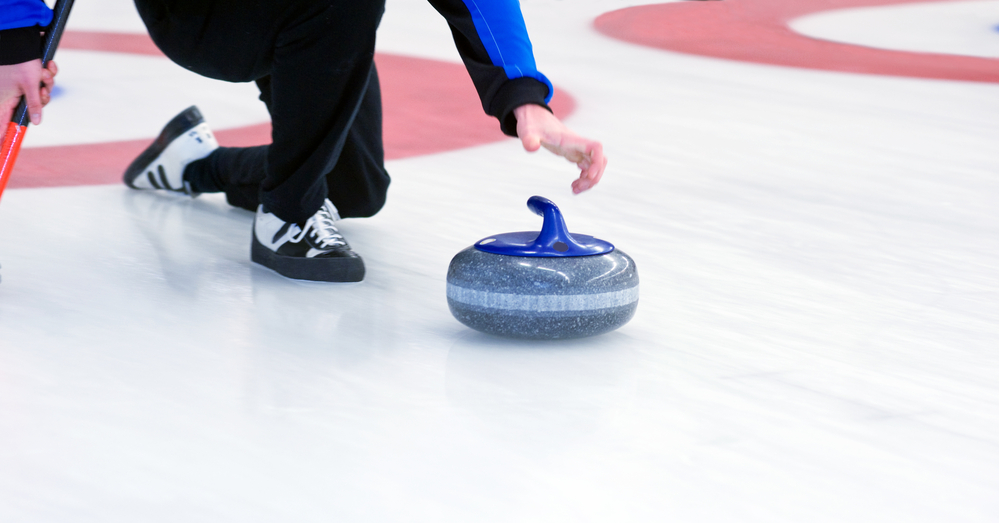A player can commit two different types of hog line violations in curling. The first is a “near hog line violation.” This occurs when the stone crosses the first hog line before the player has released the handle. The second type of violation is the “far hog line violation.” This violation occurs when a sliding stone fails to cross the second hog line before it stops. Both types of hog line violations result in the stone being immediately removed from the ice with no chance to score points. So, incurring a hog line violation can put your team at a dramatic disadvantage.

What are Hog Lines in Curling?
In curling, the hog lines are two lines drawn across the width of the ice sheet. The first line, known as the “near hog line,” is located close to the hack, where the player delivers the stone. The second line, called the “far hog line,” is situated closer to the house, the circular target area where the stones need to come to rest.
- Hog lines are two parallel lines drawn across the ice.
- The first hog line is located near the hack, close to the players.
- Stones must be released before they cross the first hog line.
- The second hog line is drawn near the house, which is the goal.
- A stone must cross the second hog line to be considered a proper throw.
The hog lines serve a dual purpose. They ensure that players release the stone before crossing the near hog line and that the stone travels beyond the far hog line to remain in play. Failure to adhere to these rules results in what is known as a hog line violation.
Hog Line Violations: When Things Go Wrong
There are two types of hog line violations you must be aware of when curling. Here is a breakdown:
Near Hog Line Violation
A near hog line violation occurs when a player fails to release the stone before it crosses the near hog line. According to the rules of curling, players must ensure that the stone has left their hand and is moving independently before it reaches the near hog line. If the stone is still in contact with the player’s hand as it crosses the line, a violation has occurred.
- If a player does not release the stone before the stone crosses the hog line, they have committed a near hog line violation.
- The stone must be moving on its own when it crosses the near hog line.
- Some curling leagues use automatic sensors to detect near hog line violations.
To determine whether a violation has taken place, many curling clubs and competitions use electronic hog line sensors. These sensors are embedded in the handle of the stone and activate as soon as the player begins their delivery. If the player does not release the stone before the near hog line, the sensor emits a visual or audible signal, indicating a violation.
Far Hog Line Violation
A far hog line violation transpires when a stone does not travel far enough to cross the far hog line. For a stone to remain in play, it must pass the far hog line and come to rest within the playing area. If it falls short, a violation is declared.
- If a stone does not fully cross the far hog line, a violation is called.
- All delivered stones must cross the far hog line to avoid a violation.
- Proper delivery and sweeping help teams avoid far hog line violations.
No sensors are required for a far hog line violation, as it can be easily observed by the players, officials, or spectators. One of the reasons sweeping is important in curling is because it can help stones travel further. Good sweepers can help prevent far hog line violations.
Consequences of Hog Line Violations
When a hog line violation occurs, the stone is considered “burned,” and it must be removed from play immediately. If the violation is a near hog line violation, the stone is typically stopped as soon as the infraction is identified. In the case of a far hog line violation, the stone is removed after it comes to a stop.
- All hog line violations result in the stone being removed from the ice.
- If there was a hog line violation the stone is “burned” and the player is not allowed to retry.
- Near hog line violations usually result in the stone being removed before it can travel to the house and collide with stones in play.
It is crucial to note that, in curling, sportsmanship and fair play are highly valued. Players are expected to acknowledge their own violations and remove the burned stone from play, even if no one else notices the infraction. This demonstration of integrity and respect for the rules is a defining aspect of the curling community.
Preventing Hog Line Violations
To avoid hog line violations, players must develop a consistent delivery technique and remain mindful of the rules. Here are some tips to help players steer clear of these violations:
Practice Your Delivery
A smooth and consistent delivery is key to preventing near hog line violations. Spend time perfecting your slide and release technique to ensure that you can comfortably let go of the stone well before the near hog line.
Be Aware of the Hog Lines
Maintain a mental awareness of the hog lines’ positions on the ice sheet. This awareness will help you gauge when to release the stone during your delivery and anticipate the stone’s momentum as it approaches the far hog line. Familiarizing yourself with the ice conditions and adjusting your delivery accordingly can help you avoid both near and far hog line violations.
Communicate with Your Team
Effective communication with your teammates is essential in curling. During gameplay, your teammates can provide guidance on the stone’s weight and trajectory. By listening to their feedback, you can make necessary adjustments to your delivery to avoid hog line violations.
Learn from Experience
As with any skill, practice makes perfect. The more you play, the better you will become at gauging the weight and momentum required to avoid hog line violations. Embrace every opportunity to practice and learn from both your successes and mistakes.
Embracing the Spirit of Curling
Hog line violations may be an unwelcome part of the game, but they also serve as valuable learning opportunities for players. By understanding the rules, practicing your delivery, and maintaining open communication with your teammates, you can minimize the occurrence of these violations and enjoy the sport to its fullest.
In the end, it’s essential to remember that curling is not just about technical prowess, but also about sportsmanship, fair play, and camaraderie. By respecting the rules, acknowledging your mistakes, and embracing the spirit of curling, you contribute to the positive atmosphere that makes this sport so unique and enjoyable for players and fans alike.


